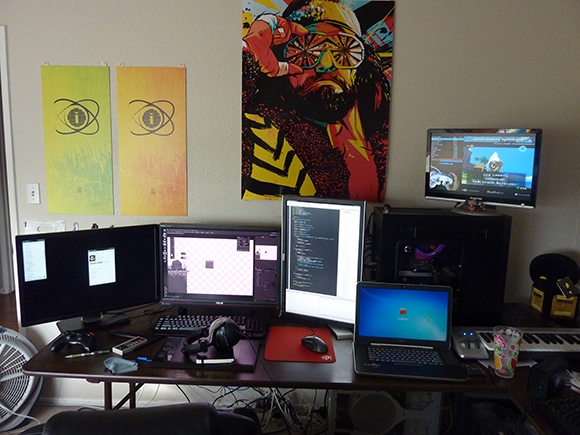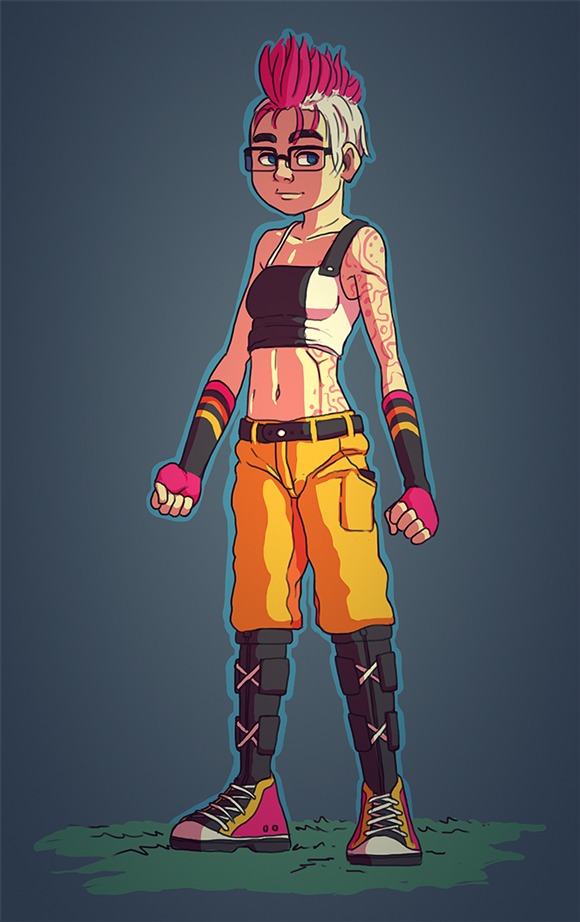Dev Log: Animations
Finally got back into C# yesterday and refactored a bunch of my drawing code. I'm basically trying to take SFML and wrap it in a framework that resembles Flashpunk. Last night I got some animations working and I tested with my simple tilemap, and a familiar face from Offspring Fling!

SFML is still proving to be super fun and easy to work with so far, especially since I'm using C#. Also for you C# developers check out Glide, which looks to be a super neato replacement for TweenLite in AS3. I'm planning on implementing it into my framework soon.
I've also been trying to figure out if texture atlasing is necessary with SFML and I can't seem to find any resources on the matter... that is one of the items on my to do list for this framework!

SFML is still proving to be super fun and easy to work with so far, especially since I'm using C#. Also for you C# developers check out Glide, which looks to be a super neato replacement for TweenLite in AS3. I'm planning on implementing it into my framework soon.
I've also been trying to figure out if texture atlasing is necessary with SFML and I can't seem to find any resources on the matter... that is one of the items on my to do list for this framework!
4 Comments
















